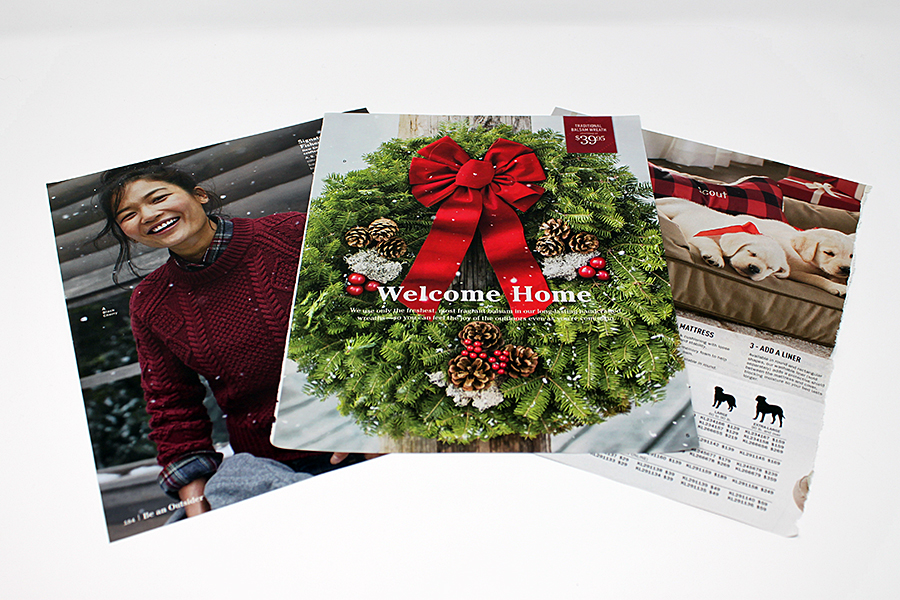Let's be honest for a second: You're sitting on the toilet and you finish a roll of toilet paper. You grab a new roll and toss the empty tube in the trash. I know, it's convenient. You don't want to run an errand to your recycling bin after leaving the bathroom. However, it is important to consider how seemingly small choices can have a big impact. Millions of pounds of toilet paper tubes are sent to landfills every year even though they are an easily recycled product (source.) To make recycling less of a hassle, think about placing a small recycling bin next to the trash bin in your bathroom. That way you can collect toilet paper tubes, soap boxes, and other recyclable products to carry in bulk to your outdoor bin. Making one trip every so often feels like less of an effort than several trips multiple times a week.
Around Thanksgiving time, I asked my family of three to set aside their empty toilet paper tubes. In about a month we went through almost 15 rolls of toilet paper which calculates to an average of 180 rolls per year. That's a lot of cardboard that should at least be recycled. But, in the spirit of good, better, best, let's talk about one way to reuse a toilet paper tube before sending it to be recycled. (You can Google "Toilet paper roll crafts" for lots of project ideas.)
Christmas is just a couple days away, but you'll probably be meeting with friends over the next few weeks to catch up and exchange gifts. Maybe just a little something like a handful of candies, a sweet piece of jewelry, or a gift certificate to your favorite local spot. Pillow boxes are a great way to dress up a little gift, but you don't need to buy any - make your own with cardboard tubes around the house! This is also a great project for using up your empty wrapping paper rolls once all the paper is gone. Just cut the tube down to your preferred length before starting.
Pillow boxes are pretty simple to make. Just use your thumb to bend down the edge of the tube. Start in the middle and and spread out to the sides to make a smooth curve. Repeat on the other half to close off the end. Fill your tube with your gift and then fold off the other side to complete your pillow box.
Now it's time to decorate!
L.L. Bean recently sent us some catalogs for the holidays so I took the theme of reusing another step further. I pulled out some pages that I liked and cut them into strips to wrap around my pillow boxes. I secured them with a small piece of tape on the back. This is also a great opportunity to use up those narrow strips of wrapping paper too small to wrap anything else. If you want to stay paper free, you can decorate your tube with a paint marker before folding it.
Last but not least: ribbons! Americans throw out 38,000 miles of ribbon each year (source) so it is important to save and reuse ribbons. Here I reused some yarn from the packaging of a handcrafted pair of earrings. You might remember from my last post that I said to avoid curling ribbon since it is made of plastic. However, my co-workers gave me a few balloons for my birthday so I saved the ribbon from the balloons to reuse rather than throwing it out. I will admit that the white ribbon is new because I bought it for another project, but since it is a fabric ribbon it can be reused. If you think that your friends and family won't reuse certain pieces of packaging, don't be afraid to speak up and ask to collect reusable items. It's as simple as saying, "I'll take that ribbon if you're going to throw it away."
Unfortunately, toilet paper tube waste is really just the result of a much bigger problem - the overuse of toilet paper in America.
Americans use 8 million tons of toilet paper a year. It takes 37 gallons of water to make one roll of toilet paper (source) and at least 27,000 trees (globally) are cut down each day just for the production of toilet paper (source.) In many other countries, the popular use of a bidet reduces the need for toilet paper. One Zero Waste blogger mentioned that her toilet paper usage decreased by 60% with the addition of an inexpensive bidet attachment in her bathroom. If you're not ready to make the leap to a bidet, there are many other ways to reduce your toilet paper footprint. Most toilet paper is made from virgin pulp. America's annual toilet paper demand uses 15 million trees, over 473 billion gallons of water, 253 thousand tons of chlorine for bleaching, and 17.3 terawatts of electricity, not to mention the additional resources for distribution (source.) If every US household replaced just one roll of virgin toilet paper with 100% post consumer recycled toilet paper for a year, it would save 423,900 trees (source.) Check out this blog post for a list of recycled and tree-free toilet paper options.











